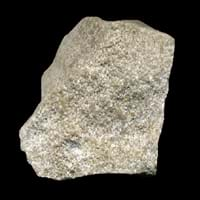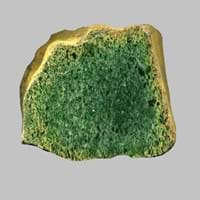Definition
Oolite is a sedimentary rock formed from ooids, spherical grains which are composed of concentric layers of calcite
Jadeitite is a metamorphic rock usually found in blueschist grade metamorphic terrains
Discoverer
Unknown
Unknown
Etymology
From oo- + -lite, after German Oolit. A rock consisting of fine grains of carbonate of lime
From pyroxene mineral jadeite
Class
Sedimentary Rocks
Metamorphic Rocks
Sub-Class
Durable Rock, Medium Hardness Rock
Durable Rock, Medium Hardness Rock
Group
Volcanic
Not Applicable
Other Categories
Fine Grained Rock, Opaque Rock
Fine Grained Rock, Opaque Rock
Texture
Clastic or Non-Clastic
Earthy
Color
Black, Blue, Brown, Cream, Green, Grey, Pink, Red, Silver, White, Yellow
Black, Brown, Colourless, Green, Grey, White
Durability
Durable
Durable
Appearance
Rounded and Rough
Rough and Dull
Interior Uses
Decorative Aggregates, Flooring, Interior Decoration
Decorative Aggregates, Homes, Interior Decoration
Exterior Uses
As Building Stone, As Facing Stone, Garden Decoration, Paving Stone
Garden Decoration, Office Buildings, Paving Stone
Other Architectural Uses
Not Yet Used
Curbing
Construction Industry
Cement Manufacture, Cobblestones, Landscaping
As Dimension Stone, Cutting Tool, Knives
Medical Industry
Not Yet Used
Not Yet Used
Antiquity Uses
Artifacts
Artifacts, Jewellery, Monuments, Sculpture
Commercial Uses
Creating Artwork, Jewelry, Used in aquariums
Commemorative Tablets, Creating Artwork, Jewelry
Types
Not Available
Not Available
Features
Available in lots of colors, Generally rough to touch, Very fine grained rock
Host Rock for Lead
Archaeological Significance
Monuments
Not Yet Used
Used
Famous Monuments
Not Applicable
Data Not Available
Sculpture
Not Yet Used
Used
Famous Sculptures
Not Applicable
Data Not Available
Figurines
Not Yet Used
Used
Formation
Oolites form when layers of calcite are deposited around a sand grain or fossil piece and are rolled around in calm water, which makes them round.
Due to change in environmental conditions, rocks are heated and pressurized deep inside the Earth's surface. Jadeitite is formed from the extreme heat caused by magma or by the intense collisions and friction of tectonic plates.
Mineral Content
Calcite, Chert, Clay, Dolomite, Quartz, Sand, Silt
Carbonate, Magnetite, Pyrrhotite, Serpentine, Sulfides
Compound Content
Aluminium Oxide, Ca, NaCl, CaO, Iron(III) Oxide, FeO, MgO
Ca, CaO, Carbon Dioxide, KCl, MgO, Sulfur Dioxide, Sulphur
Types of Metamorphism
Not Applicable
Cataclastic Metamorphism, Contact Metamorphism, Regional Metamorphism
Types of Weathering
Biological Weathering, Chemical Weathering, Mechanical Weathering
Not Applicable
Types of Erosion
Chemical Erosion, Coastal Erosion
Coastal Erosion, Water Erosion, Wind Erosion
Grain Size
Fine Grained
Very fine-grained
Fracture
Conchoidal
Uneven
Streak
White
White, Greenish White or Grey
Porosity
Less Porous
Less Porous
Luster
Pearly to Shiny
Waxy and Dull
Compressive Strength
Not Available
Cleavage
Non-Existent
Irregular
Specific Gravity
Not Available
2.79-3
Transparency
Opaque
Opaque
Density
Not Available
2.5-3 g/cm3
Specific Heat Capacity
Not Available
Resistance
Heat Resistant, Wear Resistant
Heat Resistant, Water Resistant
Deposits in Eastern Continents
Asia
Brunei, India, Indonesia, Malaysia, Singapore, Thailand, Vietnam
India, Saudi Arabia, Singapore, South Korea
Africa
Cameroon, Chad, Ghana, Kenya, Malawi, Sudan, Tanzania, Togo, Zambia, Zimbabwe
Ethiopia, Western Africa
Europe
United Kingdom
England, Georgia, Switzerland, United Kingdom
Others
Not Yet Found
Not Yet Found
Deposits in Western Continents
South America
Colombia
Colombia
Deposits in Oceania Continent
Australia
Adelaide, New Zealand, Queensland, Tonga, Victoria, Yorke Peninsula
Central Australia, New South Wales, New Zealand, Western Australia
All about Oolite and Jadeitite Properties
Know all about Oolite and Jadeitite properties here. All properties of rocks are important as they define the type of rock and its application. Oolite belongs to Sedimentary Rocks while Jadeitite belongs to Metamorphic Rocks.Texture of Oolite is Clastic or Non-Clastic whereas that of Jadeitite is Earthy. Oolite appears Rounded and Rough and Jadeitite appears Rough and Dull. The luster of Oolite is pearly to shiny while that of Jadeitite is waxy and dull. Oolite is available in black, blue, brown, cream, green, grey, pink, red, silver, white, yellow colors whereas Jadeitite is available in black, brown, colourless, green, grey, white colors. The commercial uses of Oolite are creating artwork, jewelry, used in aquariums and that of Jadeitite are commemorative tablets, creating artwork, jewelry.










